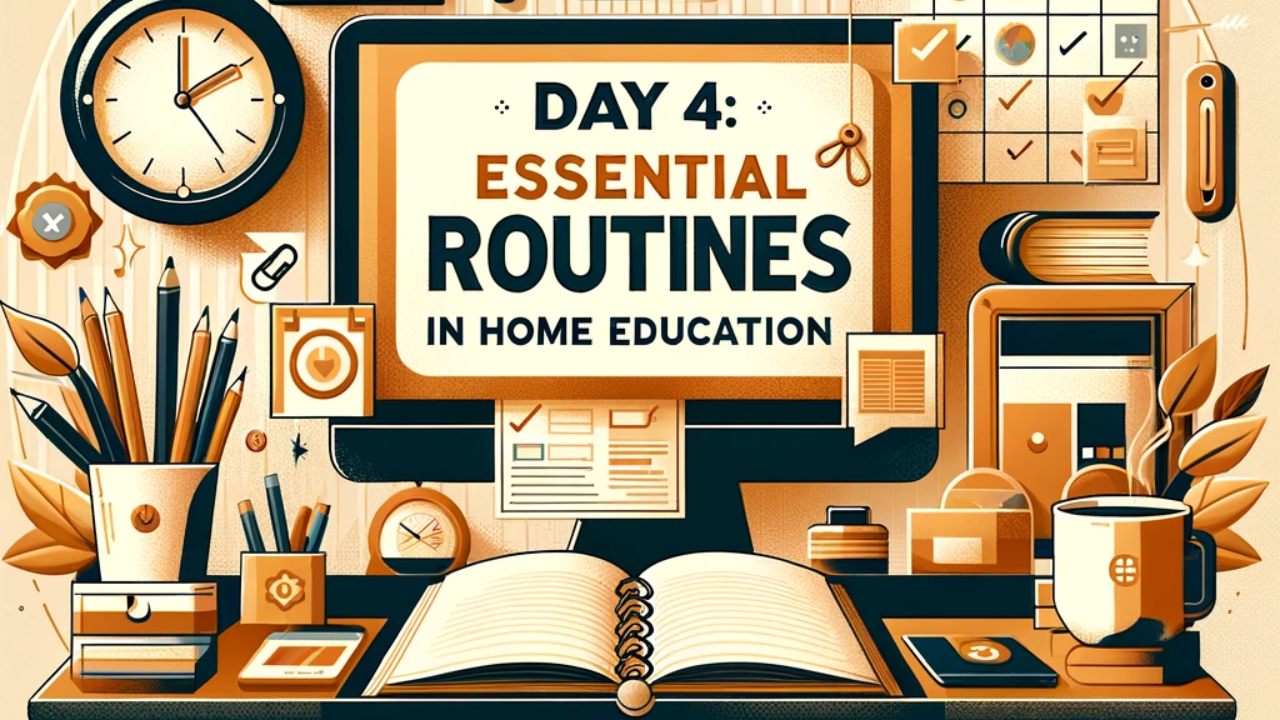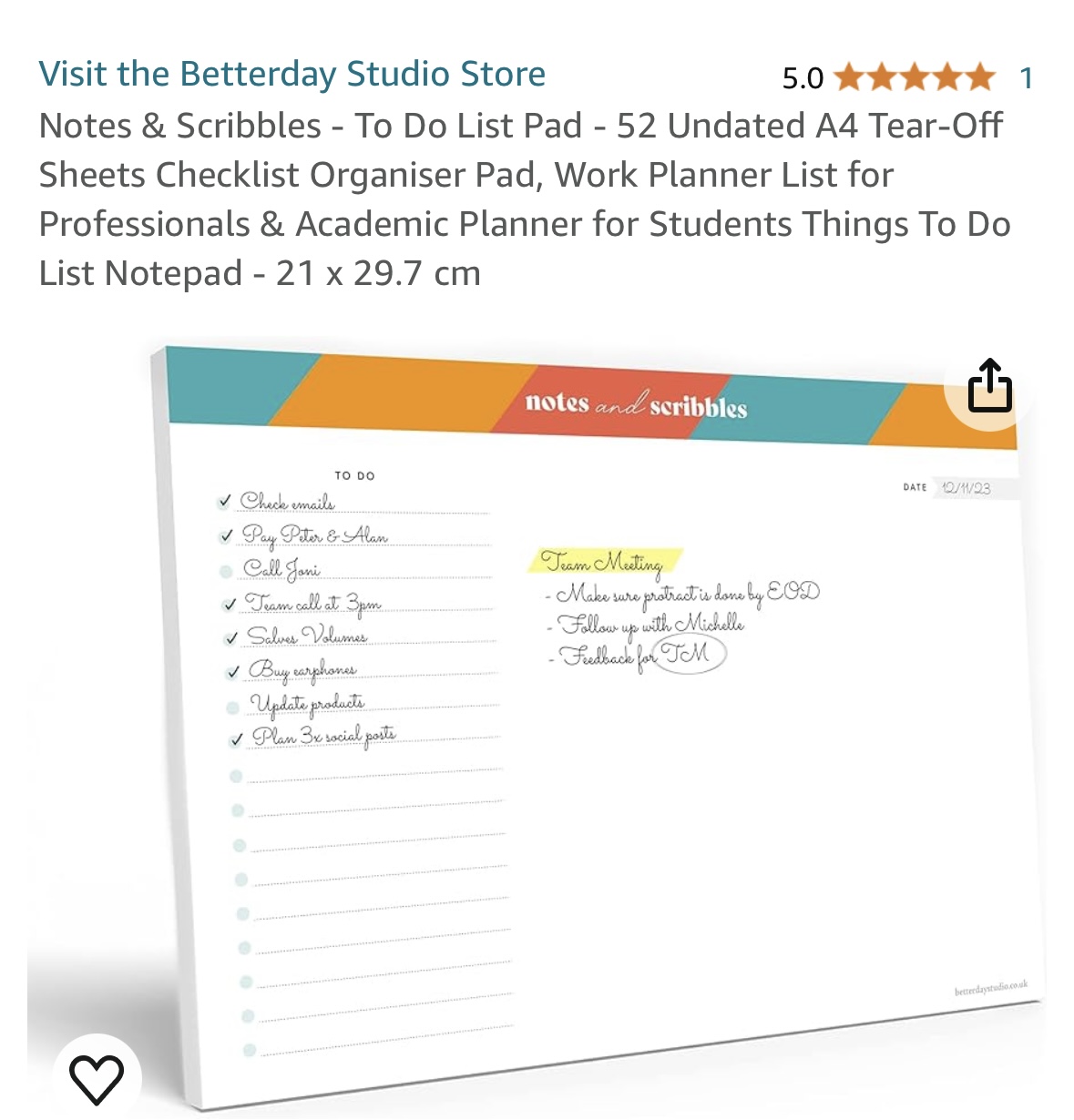Day 4: Establishing a Successful Home Education Routine
Jun 04, 2024
Welcome to Day 4 of our Home Educating series!
As an existing home educator based in the UK, I understand the importance of a well-structured routine to ensure that home education runs smoothly.
Today, we will examine how to establish a consistent schedule, effectively use visual aids, and maintain the flexibility needed to adapt to your family's unique needs. Let’s get started!

Consistent Schedule
Creating a consistent schedule is the cornerstone of a successful home education experience. It provides structure, helps manage time effectively, and sets clear expectations for both you and your children. Here’s how to create a balanced and effective schedule:
- Set Specific Times for Subjects: Designate specific times for each subject. For example, you might start with maths from 9:00 to 10:00, followed by a short break, then move on to English from 10:15 to 11:15, and so on. Consistency helps children to understand what to expect and when, therefore making transitions smoother.
- Incorporate Breaks: Regular breaks are essential to keep your children refreshed and focused. A 10-15 minute break after every hour of learning can work wonders. Make sure to include a longer break for lunch. I tend to have a 5 min break between each subject, have a 1-hour lunch break and a 15 min break in the morning.
- Balance Academic and Creative Activities: Mix academic subjects with creative and physical activities. For instance, you can alternate between reading, science experiments, art projects, and physical education. This keeps the day varied and engaging.
Here's an example of a daily schedule:
9:00 - 10:00: Maths
10:00 - 10:15: Morning Break
10:15 - 11:15: English
11:15 - 12:15: Science
12:15 - 1:15: Lunch Break
1:15 - 1:45: History
1:45 - 2:15: Art
2:15 - 2:45: Physical Activity/Outdoor Time
This depends on how many hours you generally educate per day as a rule. We do 3 hours per day, which will increase to 4 hours from September.
Visual Aids
Visual aids are incredibly effective in keeping everyone on track and making the routine more tangible for children. Here are some tips on using visual aids:
- Post the Schedule: Place the daily schedule in a visible location, such as on the fridge or a bulletin board. This helps everyone stay aware of what’s next and maintains a sense of order.
- Use Timers: Timers can be a great way to manage time and transitions. Use them to signal the end of a subject or break time. Visual timers are especially helpful for younger children who may not yet grasp the concept of time. https://amzn.to/3xdKYAe and Liquid Sensory Timer https://amzn.to/3KvamEO

- Charts and Checklists: Create charts or checklists that children can use to mark off completed tasks. This provides a sense of accomplishment and helps them stay engaged and motivated. Here is a meal planner checklist https://amzn.to/4bIJqgB, an academic daily planner https://amzn.to/3VtrrFA, an Academic Diary (I love this one!) https://amzn.to/45cb0Ax

Flexibility
While a consistent schedule is important, flexibility is key to accommodating the dynamic nature of home education. Here’s how to strike the right balance:
- Adjust as Needed: Be prepared to adjust the schedule based on your children’s needs and interests. If a particular subject or activity is going exceptionally well, allow more time for it. Conversely, if something isn’t working, don’t hesitate to change it up.
- Account for Real-Life Learning: Some of the best learning happens outside the scheduled subjects. Be open to spontaneous learning opportunities, such as nature walks, cooking together, or exploring a new hobby.

- Reflect and Adapt: Regularly review and reflect on your schedule. What’s working well? What needs tweaking? Involve your children in this process to get their feedback and make necessary adjustments.
Resources and Tools
Here are some resources to help you establish and maintain a successful home education routine:
- Twinkl: Offers a wide range of educational resources, including printable schedules and visual aids.
- Schofield & Sims: Great for workbooks and planners that can help keep your routine organised. I have used them from handwriting books.
- Amazon UK: Find timers, charts, and other organisational tools to support your home education routine.
Note: Some of these links are affiliate links, meaning we may earn a commission if you make a purchase through them. This helps support the blog and allows us to continue providing free content to you.
Tips for Maintaining Routine
Here are a few additional tips to help maintain a productive and flexible home education routine:
- Start the Day Right: Establish a morning routine that sets a positive tone for the day. This might include breakfast, some light exercise, or a quick family meeting to discuss the day's plans.
- End-of-Day Review: Take a few minutes at the end of each day to review what was accomplished and plan for the next day. This helps everyone stay organised and prepared.
- Stay Positive: Remember that flexibility doesn’t mean failure. If something doesn’t go as planned, stay positive and use it as a learning experience.

Share Your Routine
We’d love to hear how you organise your home education routine! Share your schedules, tips, and any visual aids you use on our Facebook page or tag us on Instagram.
Your contributions can inspire and support other home educating families.
Looking Ahead
Join us tomorrow as we explore practical brain breaks tips, focusing on how to make those short impromptu or scheduled breaks fun for your children. We’ll provide you with activities, resources, and ideas to help you to get the most out of those 5 or 15 min breaks.

Until then, happy home educating and enjoy establishing your routine!
P.S. Don’t forget to subscribe to our newsletter and follow us on social media for the latest updates and exclusive content. Let’s make this home education journey an incredible experience for you and your family!
To your joy!
Tracey 🙏
